From KSR College's David Mulloy...
[caption id="attachment_134005" align="alignnone" width="500"]

Photo by Regina Rickert[/caption]
On April 2nd, after a thrilling extra inning win against the UL in Louisville, the Bat Cats’ record stood at 22-6, 6-3 in the SEC, and were ranked a season high fifth in the nation. Seven weeks to the day later, they were eliminated in the first game of the SEC Tournament by Ole Miss after
dropping 19 of their last 27 games to finish unranked and out of the NCAA Tournament. So the question is, how can a team that was so highly ranked, so talented, and who played so well out of the gate suffer such a traumatic collapse in the second half of the season?
Where did it all go wrong?
The obvious answer is the LSU series. Following the win over UL, the Cats went down to Baton Rouge and were promptly swept by a combined score of 31-6. Although disappointing, at the time, the sweep was not overly concerning. LSU was, and still is, a very good team and a national title contender.
Where I think
the season really went off the rails was the next weekend against Tennessee at Cliff Hagan Stadium. After a come from behind series opening win, the Cats dropped the next two games, giving the Vols, who finished 22-30 (8-20 in the SEC), their second of two SEC series victories. The 5-0 loss in the series finale was the first “uh-oh” moment of the season. I won’t mince words;
Tennessee was not a good team and the series loss to them was inexcusable and a sign of things to come.
What made the series loss even worse was that the next four weekends were against South Carolina, Ole Miss, Arkansas, and Vanderbilt, all of whom were, and still are, ranked with
three of the four legitimate national title contenders. The Cats were swept at USC, won the series in Oxford, won once against the Razorbacks and were swept at home by Vandy to put them
on the brink of the NCAA Bubble. Throw in a beat down in Lexington by UL and an 18 inning loss against WKU in the middle and you have a really bad month of baseball. The final nail on the coffin was last weekend at Mizzouri where the 16-30 Tigers took two out of three to eliminate any hope of an at large NCAA bid.
What went wrong?
Last summer when Jerad Grundy announced that he would turn down draft 28th round draft pick by the Minnesota Twins to return for his senior season I thought, “That’s it. That is what is going to make them contenders for Omaha.” Grundy started slow but finished the 2012 season very strong and had two postseason wins. His return, combined with Corey Littrell’s second season and A.J. Reed’s promotion to the weekend gave the Cats a formidable and experienced left-handed weekend rotation. On March 23rd, Grundy pitched eight innings strong innings and struck out ten in a 3-2 victory over Mississippi State. His ERA was 1.99 after six starts. The win, his fifth on the season, would be his last in the SEC. In the following weeks, Grundy would drop
four of his next five starts with an ERA of over 10 in those game before being demoted to the midweek starter. I don’t mean to pick on Jerad, who was really having a terrific season until April, but
he was a microcosm of the entire team as he simply “lost it” and could never get back on the right track. As Grundy went, so did the Cats.
That’s not to say that the other two weekend starters, Littrell and Reed, didn’t have struggles of their own. Reed was just 2-8 on the season with both wins coming early in the non-conference portion of the schedule but his record doesn’t tell the entire story. Reed’s problem was that the offense (despite his own efforts) simply didn’t give him enough run support.
Seven of his eight losses came in games where he gave up four earned runs or less and all four of his no decisions came in games in which he gave up two or earned runs or less.
Speaking of the offense (or lack thereof), it was
the Cats’ Achilles heel all season. It was especially absent down the stretch as
seven of UK’s final eleven losses came by two runs or less. Of those seven losses, the
maximum number of runs an opponent scored in a game? Five. To say that the offense struggled is a massive understatement. Only one starter batted over .300 on the season and that was freshman Kyle Barrett, who was inserted as the everyday right fielder midway through the season, with a .349 average. Even A.J. Reed, who led the team with 13 home runs and 52 RBI, batted just .280. Fellow sophomore Austin Cousino batted .249 and led the team with 46 strikeouts. J.T. Riddle, who collected 11 hits in 14 at bats on the first weekend of the season, was the team’s second leading hitter with a .283 average. As a team, the Cats’ batted .255.
Where does UK go from here?
First, the Cats have to take stock of who is coming and going. On top of graduating three seniors: Jerad Grundy, Walter Wijas, and Zac Zellers, the Cats have six draft eligible juniors: Lucas Witt, Paul McConkey, Matt Reida, J.T. Riddle, Trevor Gott, and Corey Littrell who
will likely be drafted this summer. Their decision return or go pro will have a large impact on next year’s team. UK has eight LOIs 2013 recruiting class which includes two of the state’s top pitchers, Hunter Green and Woodford County’s Clinton Hollon.
Both Green and Hollon are expected to be selected in the MLB draft this summer so their decision will have a large impact on next season as well.
Second, the coaching staff is
going to have to address the offensive woes. For the second consecutive season, the lack of offensive production down the stretch as cost the Cats dearly. I don’t know what specifically can be done to get the bats going but I do know that no matter how good the pitching staff is, it is impossible to win without scoring any runs.
 Photo by Regina Rickert[/caption]
On April 2nd, after a thrilling extra inning win against the UL in Louisville, the Bat Cats’ record stood at 22-6, 6-3 in the SEC, and were ranked a season high fifth in the nation. Seven weeks to the day later, they were eliminated in the first game of the SEC Tournament by Ole Miss after dropping 19 of their last 27 games to finish unranked and out of the NCAA Tournament. So the question is, how can a team that was so highly ranked, so talented, and who played so well out of the gate suffer such a traumatic collapse in the second half of the season?
Where did it all go wrong?
The obvious answer is the LSU series. Following the win over UL, the Cats went down to Baton Rouge and were promptly swept by a combined score of 31-6. Although disappointing, at the time, the sweep was not overly concerning. LSU was, and still is, a very good team and a national title contender.
Where I think the season really went off the rails was the next weekend against Tennessee at Cliff Hagan Stadium. After a come from behind series opening win, the Cats dropped the next two games, giving the Vols, who finished 22-30 (8-20 in the SEC), their second of two SEC series victories. The 5-0 loss in the series finale was the first “uh-oh” moment of the season. I won’t mince words; Tennessee was not a good team and the series loss to them was inexcusable and a sign of things to come.
What made the series loss even worse was that the next four weekends were against South Carolina, Ole Miss, Arkansas, and Vanderbilt, all of whom were, and still are, ranked with three of the four legitimate national title contenders. The Cats were swept at USC, won the series in Oxford, won once against the Razorbacks and were swept at home by Vandy to put them on the brink of the NCAA Bubble. Throw in a beat down in Lexington by UL and an 18 inning loss against WKU in the middle and you have a really bad month of baseball. The final nail on the coffin was last weekend at Mizzouri where the 16-30 Tigers took two out of three to eliminate any hope of an at large NCAA bid.
What went wrong?
Last summer when Jerad Grundy announced that he would turn down draft 28th round draft pick by the Minnesota Twins to return for his senior season I thought, “That’s it. That is what is going to make them contenders for Omaha.” Grundy started slow but finished the 2012 season very strong and had two postseason wins. His return, combined with Corey Littrell’s second season and A.J. Reed’s promotion to the weekend gave the Cats a formidable and experienced left-handed weekend rotation. On March 23rd, Grundy pitched eight innings strong innings and struck out ten in a 3-2 victory over Mississippi State. His ERA was 1.99 after six starts. The win, his fifth on the season, would be his last in the SEC. In the following weeks, Grundy would drop four of his next five starts with an ERA of over 10 in those game before being demoted to the midweek starter. I don’t mean to pick on Jerad, who was really having a terrific season until April, but he was a microcosm of the entire team as he simply “lost it” and could never get back on the right track. As Grundy went, so did the Cats.
That’s not to say that the other two weekend starters, Littrell and Reed, didn’t have struggles of their own. Reed was just 2-8 on the season with both wins coming early in the non-conference portion of the schedule but his record doesn’t tell the entire story. Reed’s problem was that the offense (despite his own efforts) simply didn’t give him enough run support. Seven of his eight losses came in games where he gave up four earned runs or less and all four of his no decisions came in games in which he gave up two or earned runs or less.
Speaking of the offense (or lack thereof), it was the Cats’ Achilles heel all season. It was especially absent down the stretch as seven of UK’s final eleven losses came by two runs or less. Of those seven losses, the maximum number of runs an opponent scored in a game? Five. To say that the offense struggled is a massive understatement. Only one starter batted over .300 on the season and that was freshman Kyle Barrett, who was inserted as the everyday right fielder midway through the season, with a .349 average. Even A.J. Reed, who led the team with 13 home runs and 52 RBI, batted just .280. Fellow sophomore Austin Cousino batted .249 and led the team with 46 strikeouts. J.T. Riddle, who collected 11 hits in 14 at bats on the first weekend of the season, was the team’s second leading hitter with a .283 average. As a team, the Cats’ batted .255.
Where does UK go from here?
First, the Cats have to take stock of who is coming and going. On top of graduating three seniors: Jerad Grundy, Walter Wijas, and Zac Zellers, the Cats have six draft eligible juniors: Lucas Witt, Paul McConkey, Matt Reida, J.T. Riddle, Trevor Gott, and Corey Littrell who will likely be drafted this summer. Their decision return or go pro will have a large impact on next year’s team. UK has eight LOIs 2013 recruiting class which includes two of the state’s top pitchers, Hunter Green and Woodford County’s Clinton Hollon. Both Green and Hollon are expected to be selected in the MLB draft this summer so their decision will have a large impact on next season as well.
Second, the coaching staff is going to have to address the offensive woes. For the second consecutive season, the lack of offensive production down the stretch as cost the Cats dearly. I don’t know what specifically can be done to get the bats going but I do know that no matter how good the pitching staff is, it is impossible to win without scoring any runs.
Photo by Regina Rickert[/caption]
On April 2nd, after a thrilling extra inning win against the UL in Louisville, the Bat Cats’ record stood at 22-6, 6-3 in the SEC, and were ranked a season high fifth in the nation. Seven weeks to the day later, they were eliminated in the first game of the SEC Tournament by Ole Miss after dropping 19 of their last 27 games to finish unranked and out of the NCAA Tournament. So the question is, how can a team that was so highly ranked, so talented, and who played so well out of the gate suffer such a traumatic collapse in the second half of the season?
Where did it all go wrong?
The obvious answer is the LSU series. Following the win over UL, the Cats went down to Baton Rouge and were promptly swept by a combined score of 31-6. Although disappointing, at the time, the sweep was not overly concerning. LSU was, and still is, a very good team and a national title contender.
Where I think the season really went off the rails was the next weekend against Tennessee at Cliff Hagan Stadium. After a come from behind series opening win, the Cats dropped the next two games, giving the Vols, who finished 22-30 (8-20 in the SEC), their second of two SEC series victories. The 5-0 loss in the series finale was the first “uh-oh” moment of the season. I won’t mince words; Tennessee was not a good team and the series loss to them was inexcusable and a sign of things to come.
What made the series loss even worse was that the next four weekends were against South Carolina, Ole Miss, Arkansas, and Vanderbilt, all of whom were, and still are, ranked with three of the four legitimate national title contenders. The Cats were swept at USC, won the series in Oxford, won once against the Razorbacks and were swept at home by Vandy to put them on the brink of the NCAA Bubble. Throw in a beat down in Lexington by UL and an 18 inning loss against WKU in the middle and you have a really bad month of baseball. The final nail on the coffin was last weekend at Mizzouri where the 16-30 Tigers took two out of three to eliminate any hope of an at large NCAA bid.
What went wrong?
Last summer when Jerad Grundy announced that he would turn down draft 28th round draft pick by the Minnesota Twins to return for his senior season I thought, “That’s it. That is what is going to make them contenders for Omaha.” Grundy started slow but finished the 2012 season very strong and had two postseason wins. His return, combined with Corey Littrell’s second season and A.J. Reed’s promotion to the weekend gave the Cats a formidable and experienced left-handed weekend rotation. On March 23rd, Grundy pitched eight innings strong innings and struck out ten in a 3-2 victory over Mississippi State. His ERA was 1.99 after six starts. The win, his fifth on the season, would be his last in the SEC. In the following weeks, Grundy would drop four of his next five starts with an ERA of over 10 in those game before being demoted to the midweek starter. I don’t mean to pick on Jerad, who was really having a terrific season until April, but he was a microcosm of the entire team as he simply “lost it” and could never get back on the right track. As Grundy went, so did the Cats.
That’s not to say that the other two weekend starters, Littrell and Reed, didn’t have struggles of their own. Reed was just 2-8 on the season with both wins coming early in the non-conference portion of the schedule but his record doesn’t tell the entire story. Reed’s problem was that the offense (despite his own efforts) simply didn’t give him enough run support. Seven of his eight losses came in games where he gave up four earned runs or less and all four of his no decisions came in games in which he gave up two or earned runs or less.
Speaking of the offense (or lack thereof), it was the Cats’ Achilles heel all season. It was especially absent down the stretch as seven of UK’s final eleven losses came by two runs or less. Of those seven losses, the maximum number of runs an opponent scored in a game? Five. To say that the offense struggled is a massive understatement. Only one starter batted over .300 on the season and that was freshman Kyle Barrett, who was inserted as the everyday right fielder midway through the season, with a .349 average. Even A.J. Reed, who led the team with 13 home runs and 52 RBI, batted just .280. Fellow sophomore Austin Cousino batted .249 and led the team with 46 strikeouts. J.T. Riddle, who collected 11 hits in 14 at bats on the first weekend of the season, was the team’s second leading hitter with a .283 average. As a team, the Cats’ batted .255.
Where does UK go from here?
First, the Cats have to take stock of who is coming and going. On top of graduating three seniors: Jerad Grundy, Walter Wijas, and Zac Zellers, the Cats have six draft eligible juniors: Lucas Witt, Paul McConkey, Matt Reida, J.T. Riddle, Trevor Gott, and Corey Littrell who will likely be drafted this summer. Their decision return or go pro will have a large impact on next year’s team. UK has eight LOIs 2013 recruiting class which includes two of the state’s top pitchers, Hunter Green and Woodford County’s Clinton Hollon. Both Green and Hollon are expected to be selected in the MLB draft this summer so their decision will have a large impact on next season as well.
Second, the coaching staff is going to have to address the offensive woes. For the second consecutive season, the lack of offensive production down the stretch as cost the Cats dearly. I don’t know what specifically can be done to get the bats going but I do know that no matter how good the pitching staff is, it is impossible to win without scoring any runs.
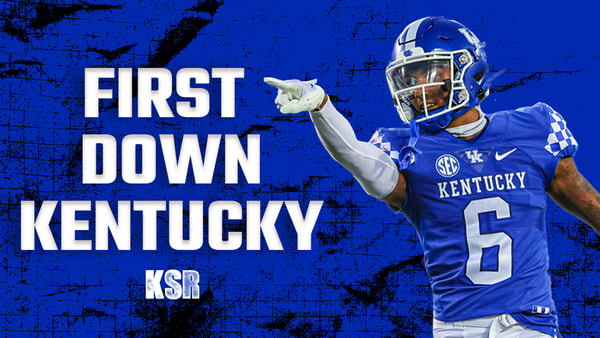
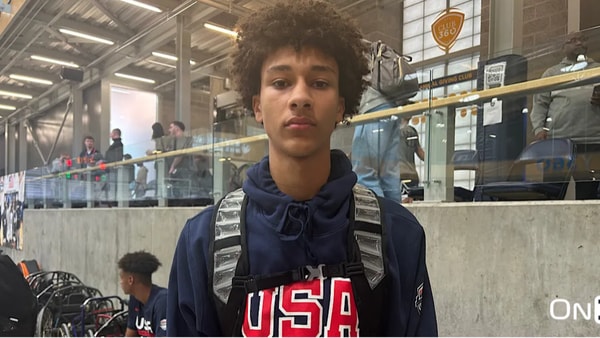
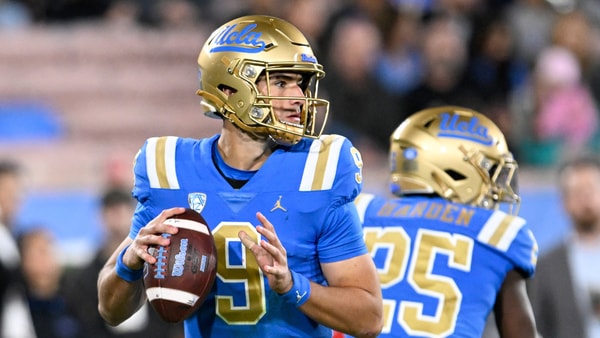
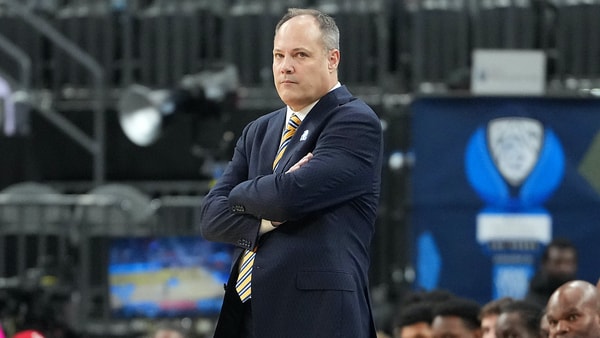
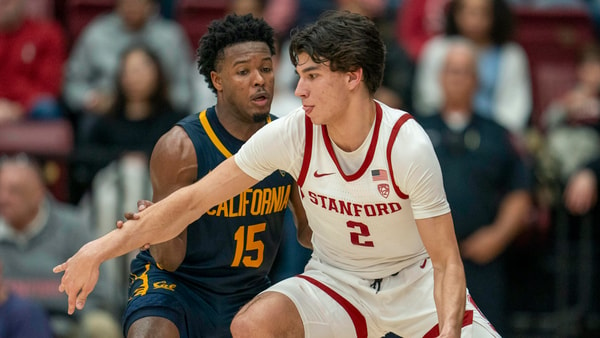
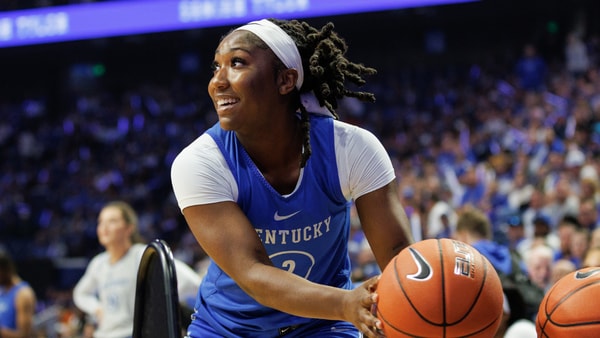
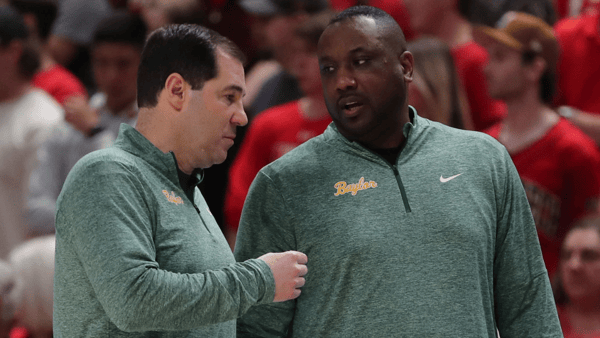

Discuss This Article
Comments have moved.
Join the conversation and talk about this article and all things Kentucky Sports in the new KSR Message Board.
KSBoard